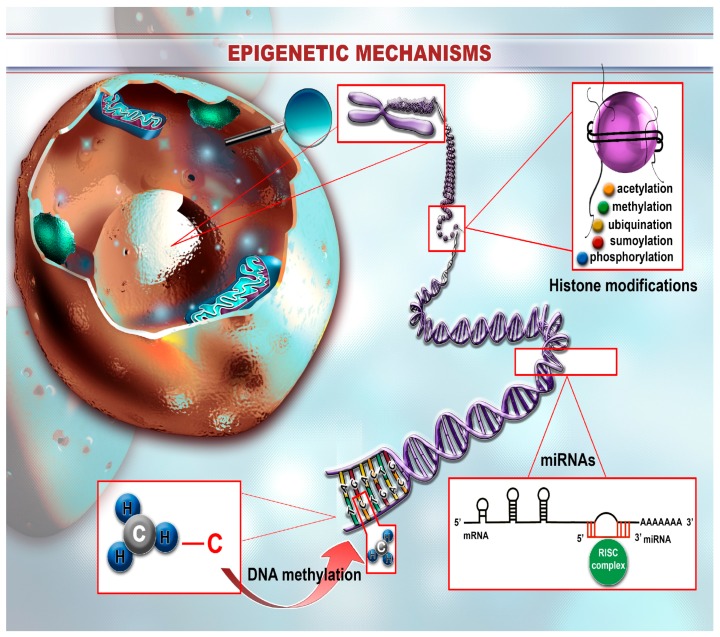Figure 1.
The landscape of epigenetic mechanisms. Epigenetic changes consist of reversible modifications affecting the structure of the DNA/chromosome that are further translated at the protein level through expressional changes. One of the most studied epigenetic mechanisms consists of DNA methylation that occurs mainly within the CpG islands that are located in different repetitive genome regions or, more often, within promoter regions. The methylation pattern is different depending on the region, where most of the islands located in the promoter area are hypomethylated, the other ones, from repetitive segments, are methylated. Histone modifications are also part of the epigenetic machinery and mainly consist of ubiquitylation, sumoylation, methylation, acetylation, and also phosphorylation of the histone tails. Depending on the type of modification, these mechanisms can result in increased activity of the specific DNA segment or inversely blockage of function. Not in the least, miRNAs also play a crucial part in the establishment of the epigenetic landscape where these sequences are differentially expressed between different cellular entities and also between normal and pathological cells. Their ability to target and inhibit the translation of specific genes makes them crucial players within homeostatic signaling pathways and also therapeutic targets in disease states.

